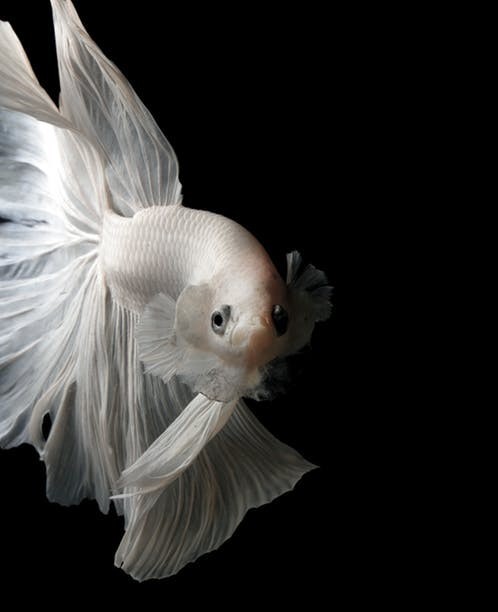Originally posted on July 7, 2020 @ 11:50 pm
Last Updated on 1 year by admin
Curious about the fascinating world of betta fish reproduction? Understanding the process of betta egg-laying is crucial for the care and breeding of betta fish. It is important to know how betta eggs hatch and what to expect when betta babies are born. Proper knowledge of betta pregnancy is essential for successful breeding and care. So, how long does it take for female bettas to lay eggs during the mating process? The pregnancy period for female bettas is relatively short. After mating, they can lay their eggs within a few days. Male bettas are responsible for building bubble nests to protect the eggs until they hatch.
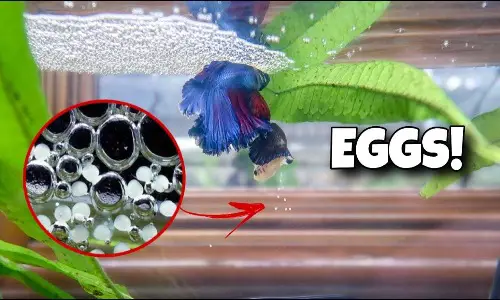
The egg-laying process is a vital part of the reproductive cycle of female bettas. Male bettas also play a role in reproduction by building bubble nests and mating with the females. From the mating process to the hatching of betta eggs, each step is essential for ensuring the health and well-being of betta babies. The presence of the egg spot plays a crucial role in the process. By knowing the basics, you can create an ideal aquarium environment and support your bettas throughout this remarkable journey of bubble nest building, pregnancy, and wild behavior.
Whether you’re a beginner breeder or simply curious about these beautiful creatures, this information will provide valuable insights into the reproductive behavior of female betta fish , including their interactions with males, the creation of a nest, and the process of pregnancy.
So, let’s unravel the mysteries behind how long it takes for female bettas in pregnancy to lay eggs and gain a deeper appreciation for these extraordinary aquatic beings.
Betta Fish Gestation Period: How Long Are They Pregnant?
The gestation period of female bettas, also known as Siamese fighting fish, ranges from 24 to 48 hours. Compared to other species, the duration of pregnancy in female bettas is relatively short. This gestation period in betta fish determines when the female betta fish will lay her eggs and plays a crucial role in successful breeding.
Monitoring the gestation period of female bettas is important for breeders who wish to encourage egg-laying and ensure the survival of the baby fish, known as fry. By understanding how long it takes for female bettas to lay eggs, breeders can provide optimal conditions for their fish and increase the chances of a successful breeding process.
Female Bettas: Quick Pregnancy, Swift Egg-Laying
Female bettas have a remarkably short gestation period compared to many other fish species. Within just one or two days after mating with a male betta, the female will typically lay her eggs. This swift process allows for efficient reproduction of female betta fish and ensures that the fry are born at an appropriate time.
During this brief gestation period, female bettas undergo physical changes in preparation for egg-laying. Female betta fish may have rounder bellies as they develop mature eggs. Breeders often observe these changes as indicators that their female betta is nearing the end of her pregnancy.
Importance of Monitoring Gestation Period
For breeders who are actively trying to encourage breeding and produce offspring, monitoring the gestation period of female betta fish becomes crucial. By keeping track of when betta fish mating occurred and observing any physical changes in the female’s appearance, betta fish breeders can anticipate when she will likely lay her eggs.
Monitoring also allows betta fish breeders to create suitable conditions within the tank to support successful egg-laying and fry survival. Adjusting water parameters such as temperature and pH levels can help mimic natural environments where bettas thrive during this critical stage.
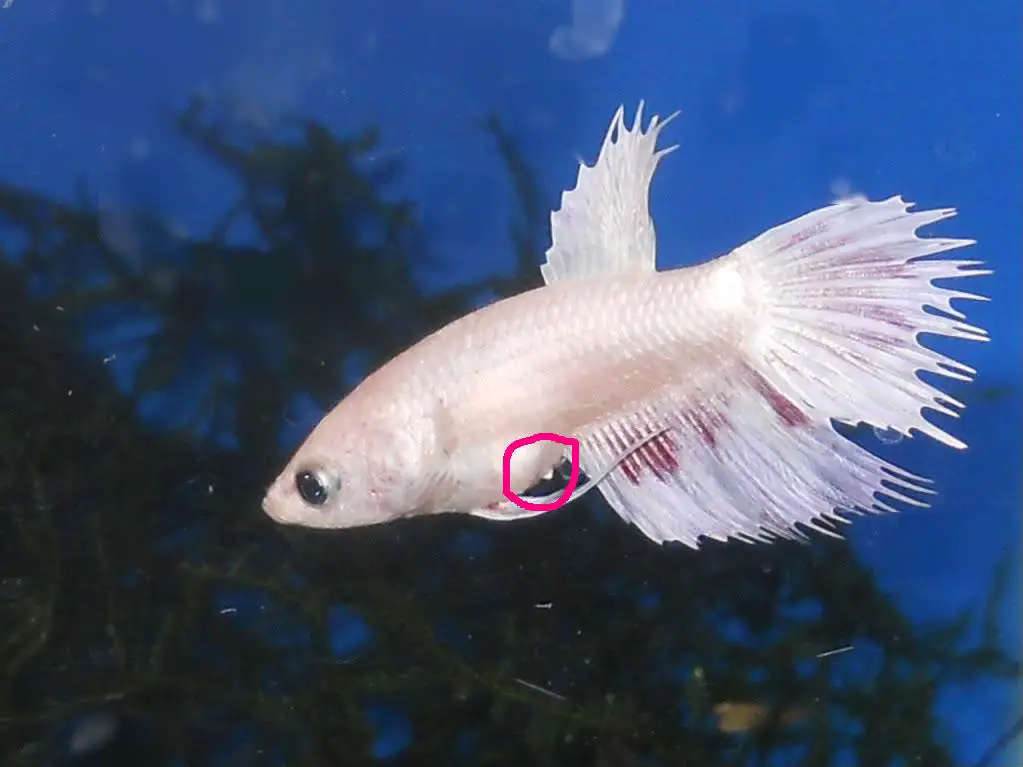
Successful Breeding Techniques
To increase the chances of successful breeding, betta fish breeders can employ various techniques during the gestation period. Here are a few tips to consider:
-
Provide Hiding Spots: Female bettas often prefer to lay their eggs in secluded areas. By adding plants or decorations that offer hiding spots within the tank, betta fish breeders can create an environment that encourages egg-laying for their betta fish.
-
Maintain Optimal Water Conditions: Clean and well-maintained water is essential for the health of both the female betta and her developing fry. Regular water changes and monitoring of water parameters help ensure a suitable habitat for successful breeding of betta fish.
-
Separate Male Betta After Mating: Once mating has occurred, it is advisable to remove the male betta from the tank to prevent him from harming or eating the eggs or fry. This separation allows the female betta fish to focus on caring for her offspring without any interference.
-
Provide Nutritious Food: During and after egg-laying, it is crucial to provide nutritious food for both the female betta and her fry. High-quality fish foods designed specifically for bettas can help support their growth and development.
By following these techniques and closely monitoring the gestation period, breeders can increase their chances of a successful breeding experience with their betta fish.
Signs of Female Betta Readiness to Lay Eggs
Gravid Spot: A Telltale Sign
One surefire sign that a female betta is ready to lay eggs is the presence of a gravid spot. This darkened area near the belly of the betta fish, also known as an ovipositor, indicates that the female betta fish has matured and is prepared for breeding. The gravid spot on a female betta fish may appear as a small black dot or a larger, more noticeable patch on her abdomen. It serves as a visual indicator that the betta fish is carrying eggs and is ready to release them for fertilization.
Increased Aggression: A Protective Instinct
Another sign that a female betta is preparing to lay eggs is increased aggression towards males. While bettas are generally known for their territorial behavior, females can become particularly aggressive when they are ready to breed. Betta fish may flare their fins, chase away male fish, and display heightened territoriality. This behavior in betta fish stems from their instinctual need to protect their future fry (baby fish) once they are laid.
Nesting Behavior: Building Bubble Nests
Female betta fish preparing to lay eggs often exhibit nesting behavior by creating bubble nests at the water’s surface. These betta fish nests serve as safe havens for the eggs once they are released by the female and fertilized by the male. The female will blow bubbles using air from her labyrinth organ, which allows bettas to breathe atmospheric oxygen. These betta fish bubbles then cluster together, forming a floating nest where the betta fish eggs will be deposited.
Physical Changes: An Enlarged Abdomen
Physical changes in a female betta can also indicate her readiness to lay eggs. One such change in betta fish is an enlarged abdomen or belly region. As a betta fish develops and carries multiple eggs within her body, her betta fish stomach becomes visibly distended compared to its usual size. This enlargement occurs gradually over time as the betta eggs mature within her ovaries before being released during spawning.
When observing your female betta, keep an eye out for these signs of readiness to lay eggs. The gravid spot, increased aggression towards males, nesting behavior, and physical changes like an enlarged abdomen all indicate that your female betta is gearing up for the reproductive process.
Remember that not all female bettas will exhibit these signs at the same time or with the same intensity. Each betta fish is unique and may display variations in betta behavior and physical changes. It’s essential to understand your individual betta fish’s patterns and behaviors to accurately determine when she is ready to lay eggs.
Factors Affecting Time Taken for Betta Fish to Lay Eggs
Environmental Factors: Temperature and Water Quality
The time it takes for female bettas to lay their eggs can be influenced by various environmental factors. Two key factors for keeping a betta fish healthy and happy are the temperature of the water and the overall quality of the betta’s environment. Bettas prefer warmer water, typically around 78-80 degrees Fahrenheit (25-27 degrees Celsius), for optimal breeding conditions. If the water temperature for betta fish is too cold or too hot, it can delay or even prevent egg-laying.
Water quality plays a crucial role in the reproductive process. Clean and well-maintained tanks with appropriate filtration systems provide a healthier environment for bettas to breed. Poor water quality, on the other hand, can stress out the fish and hinder their ability to lay eggs.
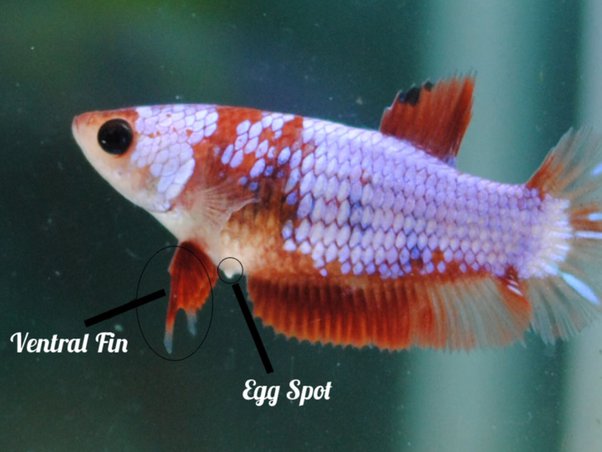
Stress Levels
Stress levels also have a significant impact on when female bettas lay their eggs. Just like humans, fish experience stress, and it can affect their reproductive behavior. High-stress levels can delay or inhibit egg-laying altogether.
Various factors can contribute to stress in female bettas, such as overcrowded tanks, aggressive tank mates, inadequate hiding spots or plants in the tank, sudden changes in water parameters, or excessive handling by humans. It’s crucial to create a calm and peaceful environment for your bettas to minimize stress levels and encourage timely egg-laying.
Genetic Factors
Genetics play a role in determining how long it takes for female bettas to lay their eggs after mating. Different genetic traits may influence the reproductive behavior of bettas. Some strains may exhibit faster egg-laying tendencies compared to others.
Selective breeding practices over generations have resulted in various genetic variations among betta fish strains. Breeders often aim to produce specific traits like vibrant colors or unique fin shapes but might inadvertently affect reproductive behaviors as well.
Age and Overall Health
The age and overall health of female bettas can also impact the time it takes for them to lay eggs. Younger bettas may take longer to mature sexually and start laying eggs regularly. As they age, their reproductive system becomes more developed, and egg-laying becomes more consistent.
Furthermore, the overall health of the fish plays a significant role in their reproductive capabilities. A betta that is malnourished or suffering from any illness or disease may have difficulty producing and laying eggs on schedule.
It’s essential to provide proper nutrition and care to maintain the overall health of your bettas. A balanced diet consisting of high-quality pellets, occasional live or frozen foods, and regular water changes can contribute to their well-being and promote timely egg-laying.
Recognizing the Ideal Conditions for Successful Egg-Laying
Maintaining stable water parameters, including temperature and pH, is crucial for promoting successful egg-laying in female bettas. These finned beauties are quite particular about their surroundings. They prefer a cozy and comfortable environment that mimics their natural habitat.
Stable Water Parameters: A Key Factor
To encourage female bettas to lay their eggs, it’s essential to keep the water conditions consistent. Temperature plays a vital role in triggering the breeding behavior of these fish. Ideally, the water temperature should be around 78-80°F (25-27°C). This warmth signals to the females that it’s time to start preparing for spawning.
In addition to temperature, maintaining a suitable pH level is equally important. Female bettas prefer slightly acidic water with a pH range between 6.5 and 7.0. Ensuring these stable water parameters creates an ideal environment for successful egg-laying.
Creating Hiding Spots
Providing hiding spots in the aquarium is another crucial aspect of encouraging female bettas to lay their eggs. These spots can be created using live plants or artificial caves where the females can feel secure during the spawning process.
Female bettas have a unique reproductive organ called an ovipositor, which they use to deposit their eggs on surfaces such as plant leaves or cave walls. By offering ample hiding spots, you create a conducive environment that mimics their natural habitat and encourages them to engage in this instinctive behavior.
The Importance of Cleanliness
A clean and well-maintained aquarium is not only visually appealing but also plays a significant role in promoting successful egg-laying in female bettas. Regular maintenance routines such as partial water changes help keep the tank free from any accumulated waste or debris that could hinder breeding activities.
Keeping the aquarium clean also helps prevent diseases and infections that may affect both male and female bettas during the spawning process. A healthy and clean environment increases the chances of successful fertilization and hatching of the eggs.
Proper Nutrition for Successful Egg-Laying
Ensuring that female bettas receive proper nutrition is vital for successful egg-laying. A balanced diet rich in high-quality pellets or flakes, supplemented with live or frozen foods, provides the necessary nutrients for reproductive health.
Feeding your female betta a varied diet helps promote overall well-being and boosts their reproductive capabilities. It’s important to note that overfeeding can negatively impact egg-laying, so it’s crucial to provide them with an appropriate amount of food based on their size and activity level.
By offering optimal nutrition, you increase the likelihood of healthy eggs being laid by gravid (pregnant) females. These eggs can then be carefully monitored until they hatch into adorable baby bettas.
Consequences of Female Bettas Laying Unfertilized Eggs
Female bettas, also known as Siamese fighting fish, have the ability to lay eggs even without mating with a male. This natural behavior is called “egg-laying” or “spawning.” While it may seem harmless, frequent egg-laying without fertilization can have several consequences for female bettas.
Depletion of Energy Reserves
When a female betta lays unfertilized eggs, it expends a significant amount of energy in the process. Each egg requires nutrients and resources from the female’s body to develop properly. If she continuously lays eggs without mating, this can deplete her energy reserves over time.
Imagine going for a long run every day without replenishing your energy through proper nutrition. Eventually, you would feel exhausted and drained. The same principle applies to female bettas laying unfertilized eggs repeatedly. It can leave them weak and vulnerable to various health issues.
Risk of Fungal Infections
Unfertilized eggs are more susceptible to developing fungal infections compared to fertilized ones. Without the protective coating provided by sperm during fertilization, these eggs become more prone to external pathogens such as fungi.
Fungal infections can be detrimental to the overall health of female bettas. They can cause various symptoms like discoloration, fuzzy growth on the eggs, and even lead to serious illnesses if left untreated. These infections can compromise the well-being of the female fish and potentially impact their ability to reproduce successfully in the future.
Potential Risk of Egg-Binding
Another potential risk associated with laying unfertilized eggs is egg-binding. This condition occurs when some or all of the eggs get stuck inside the female’s body instead of being released naturally.
Egg-binding can be extremely dangerous for female bettas as it may lead to complications such as internal injuries or infections. The trapped eggs put pressure on internal organs, causing discomfort and potentially leading to life-threatening situations if not addressed promptly.
It’s important for betta owners to closely monitor their female fish during the egg-laying process. If they notice any signs of distress or abnormal behavior, such as excessive bloating or difficulty swimming, it’s crucial to seek veterinary assistance immediately.
To summarize, the consequences of female bettas laying unfertilized eggs include depletion of energy reserves, increased risk of fungal infections, and potential complications related to egg-binding. It is essential for betta owners to understand these risks and take appropriate measures to ensure the well-being of their female fish.
Tips for Breeding Betta Fish and Ensuring Successful Mating
Breeding betta fish can be an exciting and rewarding experience. If you’re wondering how long it takes for female bettas to lay eggs, there are several factors to consider. By following these tips, you can increase the chances of successful mating and ensure a healthy breeding process.
Separate Breeding Tanks for Males and Females
To promote successful mating, it’s crucial to provide separate breeding tanks for male and female bettas. Keeping them in separate tanks allows them to establish their territories and reduces the likelihood of aggression. This separation also gives the female a safe space to lay her eggs without being disturbed by the male.
Conditioning with High-Quality Food
Conditioning both male and female bettas with high-quality food is essential for enhancing breeding success. Feeding them a varied diet rich in protein helps improve their overall health and reproductive capabilities. Live or frozen foods such as brine shrimp, daphnia, or bloodworms are excellent options to include in their diet.
Introduce the Male into the Female’s Tank
Introducing the male into the female’s tank is key. The presence of the male stimulates mating behavior in bettas by triggering their natural instincts. However, it’s important to closely monitor their interaction as aggressive behavior from either fish can lead to injury or stress.
Monitor Water Temperature Closely
Maintaining optimal water temperature during breeding is crucial for successful mating. Bettas prefer warmer water temperatures ranging from 78°F to 82°F (25°C – 28°C). Fluctuations outside this range can negatively impact their reproductive behaviors. Using a reliable aquarium heater and thermometer will help you maintain consistent water conditions.
Provide Hiding Spots
Creating hiding spots within the breeding tank is essential for providing security and privacy to your bettas during mating. Adding plants, caves, or other decorations will give the female a place to retreat after laying her eggs. These hiding spots also prevent the male from becoming overly aggressive towards the female.
Observe and Monitor Behavior
During the mating process, it’s crucial to closely observe and monitor the behavior of your bettas. Look for signs of courtship such as the male building bubble nests or displaying vibrant colors to attract the female’s attention. Once successful mating has occurred, you may notice that the female becomes plumper with eggs.
Remove Female After Spawning
Once spawning has taken place and the female has laid her eggs, it is important to remove her from the breeding tank promptly. Leaving her in the same tank can lead to aggression from either fish and increase the chances of damage to both eggs and bettas. Separating them ensures a safe environment for egg development.
Provide Proper Care for Eggs
After removing the female, it’s essential to provide proper care for the fertilized eggs. The male betta takes on this responsibility by guarding and tending to them until they hatch. It’s crucial to maintain optimal water conditions during this time, ensuring adequate oxygenation and cleanliness within the tank.
Breeding betta fish requires careful planning and attention to detail. By following these tips, you can increase your chances of successful mating and ensure a healthy breeding process for your bettas.
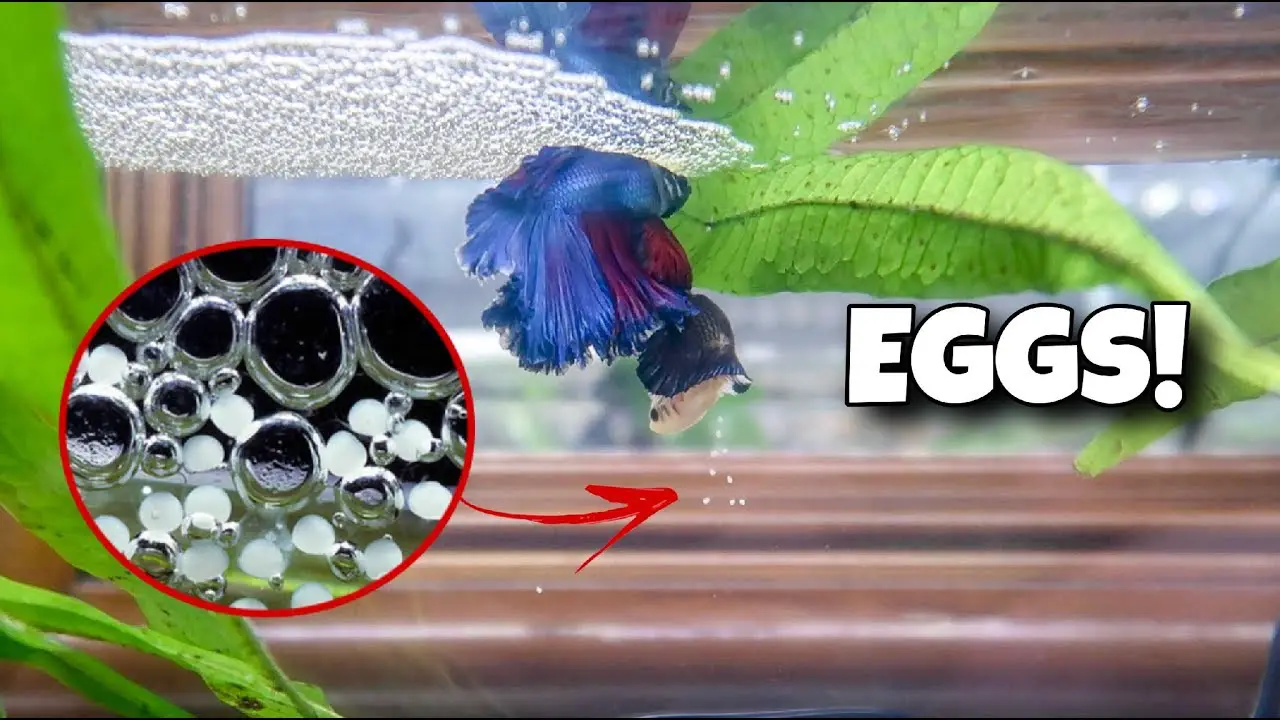
Insights into Female Betta Egg-Laying Process
Congratulations! You now have a deeper understanding of the female betta egg-laying process. From learning about the gestation period to recognizing signs of readiness and understanding the factors that affect egg-laying, you are well-equipped to provide the ideal conditions for successful mating. Just like humans, female bettas need the right environment and care to ensure a smooth and successful reproductive journey.
Now that you know how long it takes for female bettas to lay eggs, it’s time to put your knowledge into action. Make sure you provide your female betta with a comfortable and stress-free environment, maintaining optimal water conditions and providing hiding spots for her eggs. Remember, patience is key during this process as it can take anywhere from a few hours to several days for your betta fish to lay her eggs.
FAQs
How often do female bettas lay eggs?
Female bettas can lay eggs every two weeks or so if they are healthy and in good condition. However, keep in mind that constant breeding can be physically demanding for them, so it’s important to give them sufficient rest between spawning events.
Can I breed my female betta without a male?
Yes, it is possible for female bettas to lay unfertilized eggs without the presence of a male. However, these eggs will not hatch into fry as they require fertilization. If you’re interested in breeding your bettas, introducing a compatible male is necessary.
How long does it take for betta fry to hatch?
After being fertilized by the male’s sperm, betta fry typically hatch within 24-48 hours. During this time, they will remain attached to their nest until they become free-swimming after about three days.
What should I feed my female betta during egg-laying?
Providing your female betta with protein-rich foods such as brine shrimp or bloodworms can help support her during the egg-laying process. These nutritious foods will provide her with the necessary energy to produce healthy eggs.
How many eggs do female bettas lay?
Female bettas can lay anywhere from a few dozen to several hundred eggs, depending on their age and overall health. It’s important to note that not all eggs may be viable, so it’s normal for some not to hatch.

